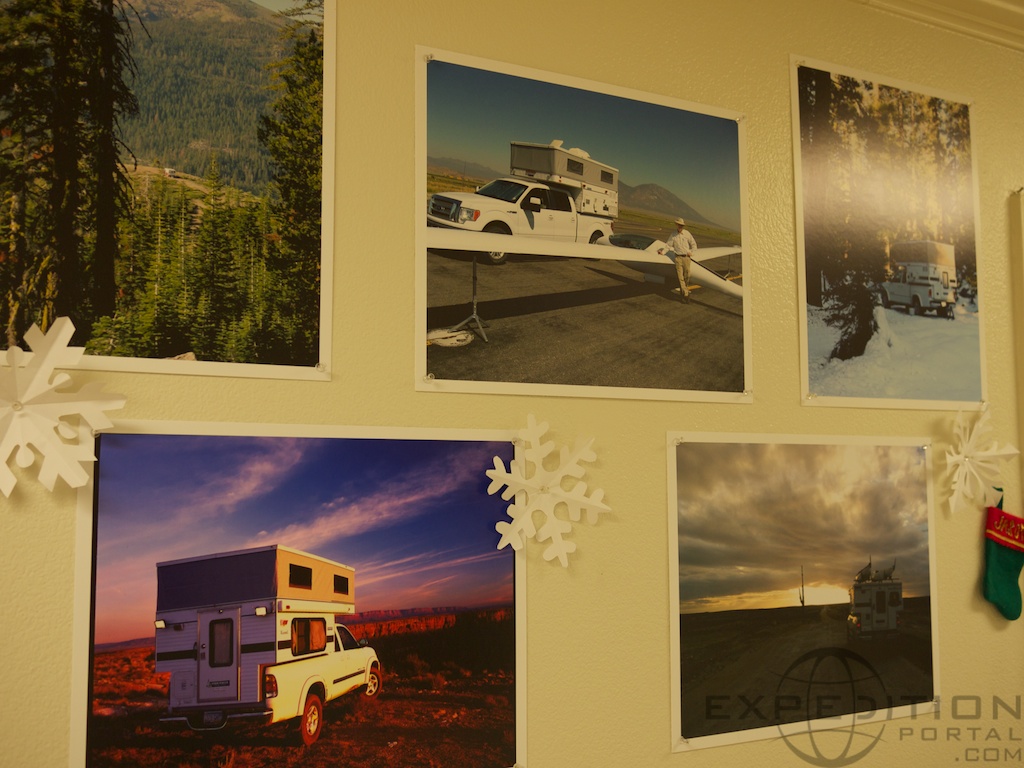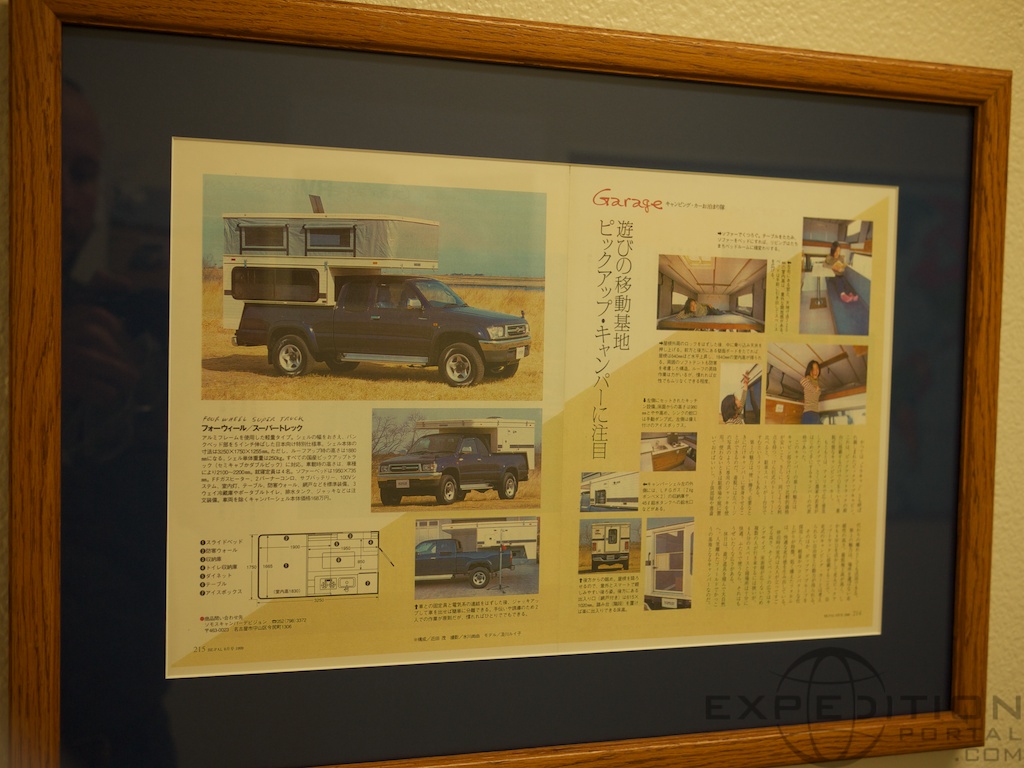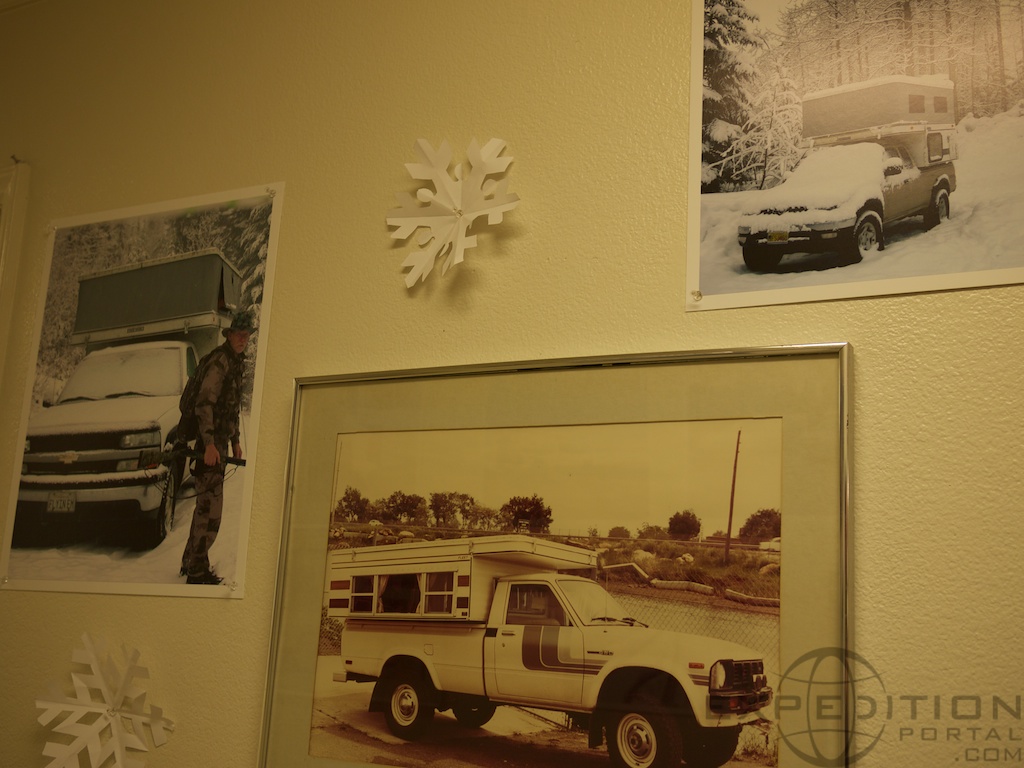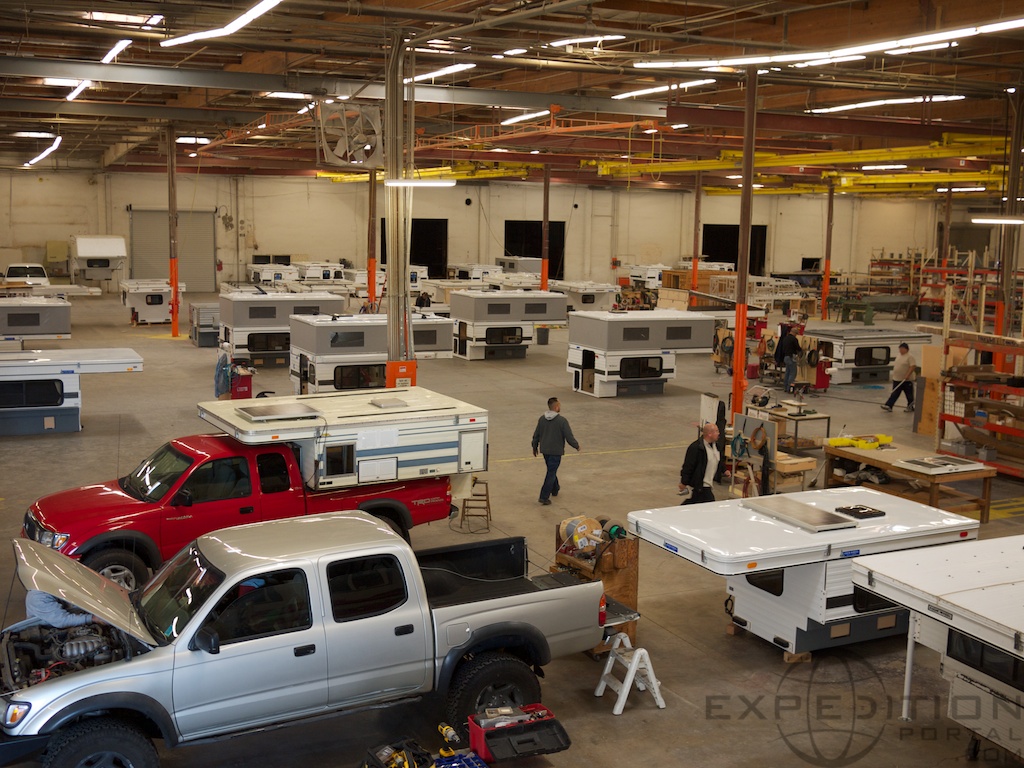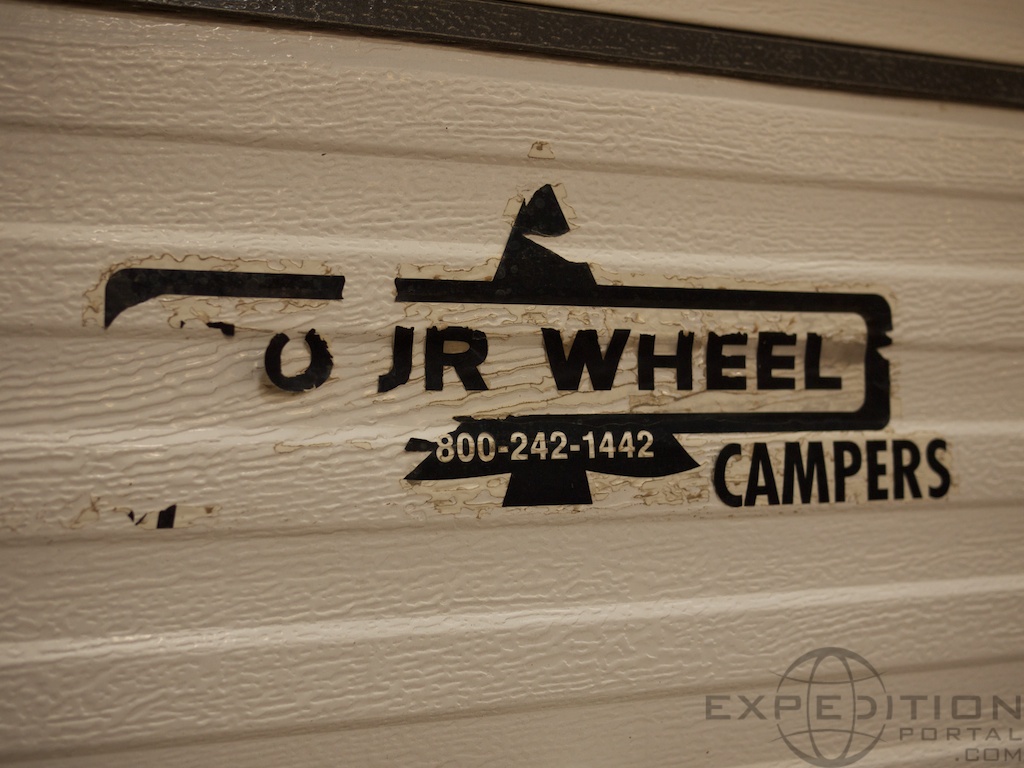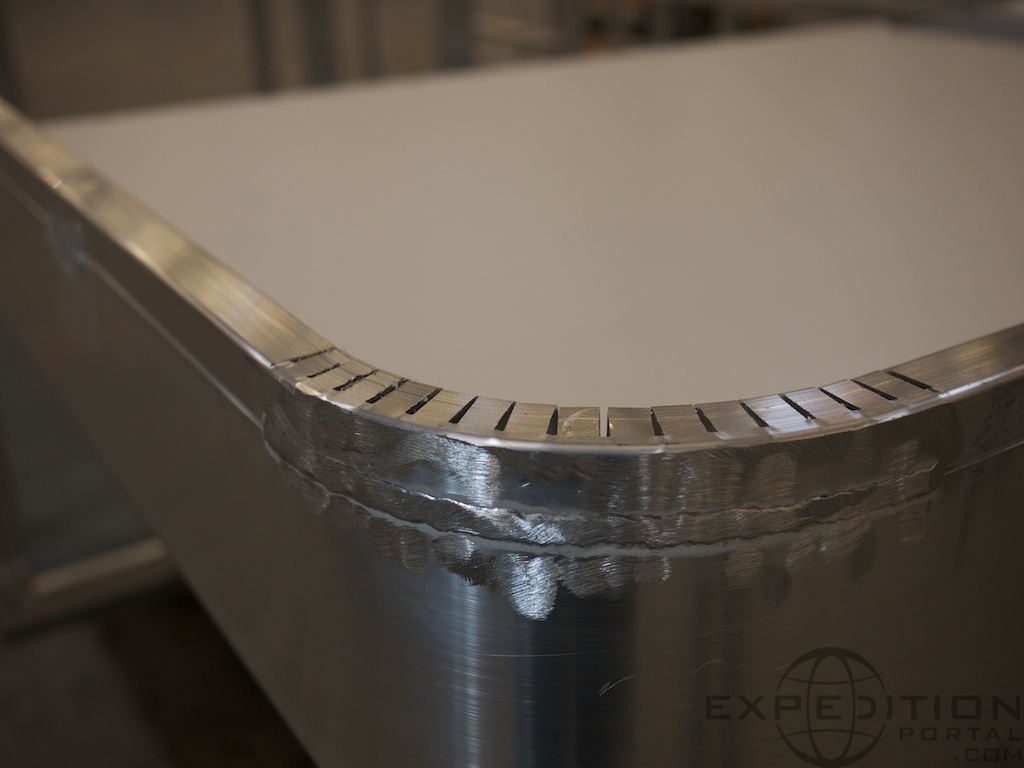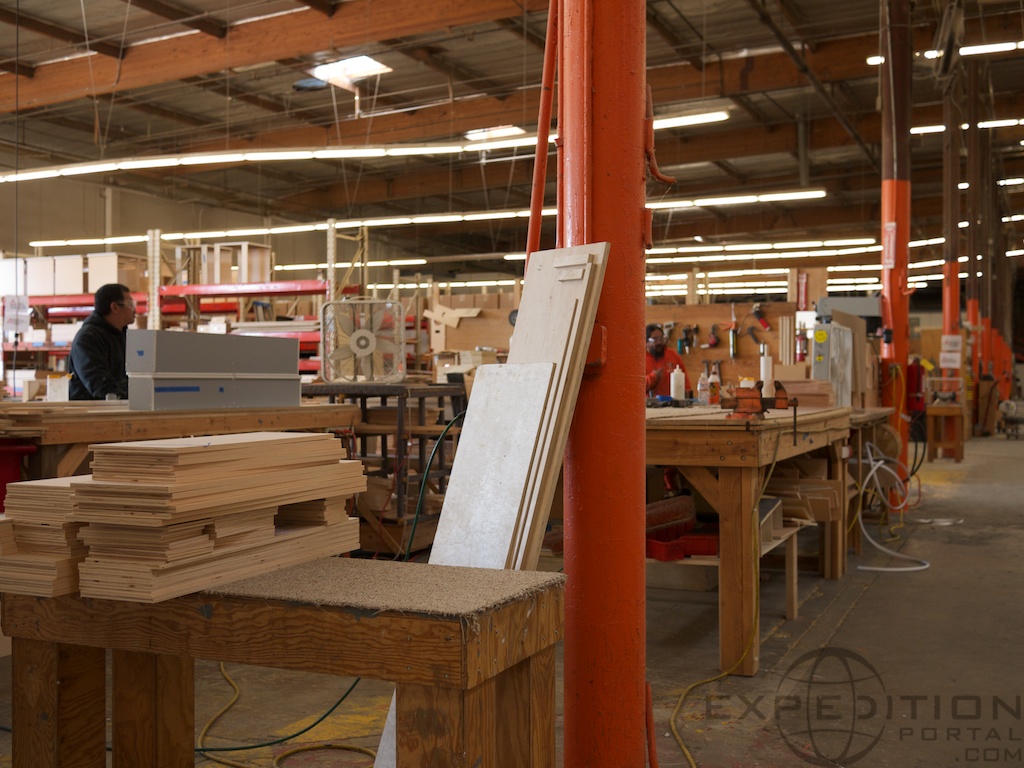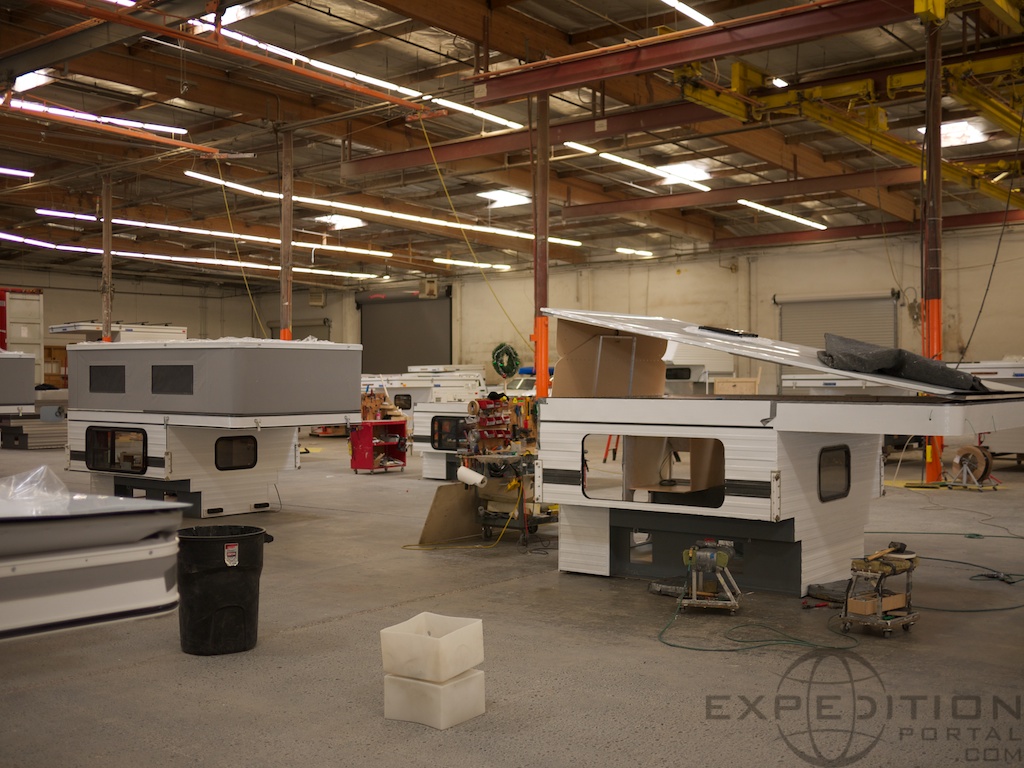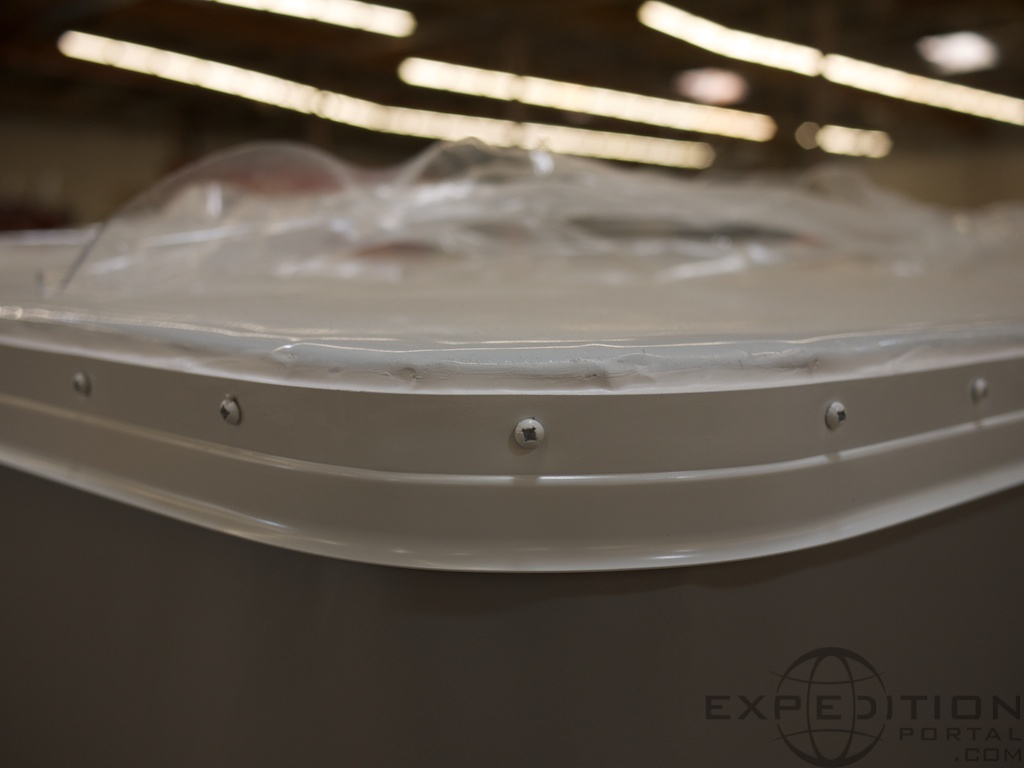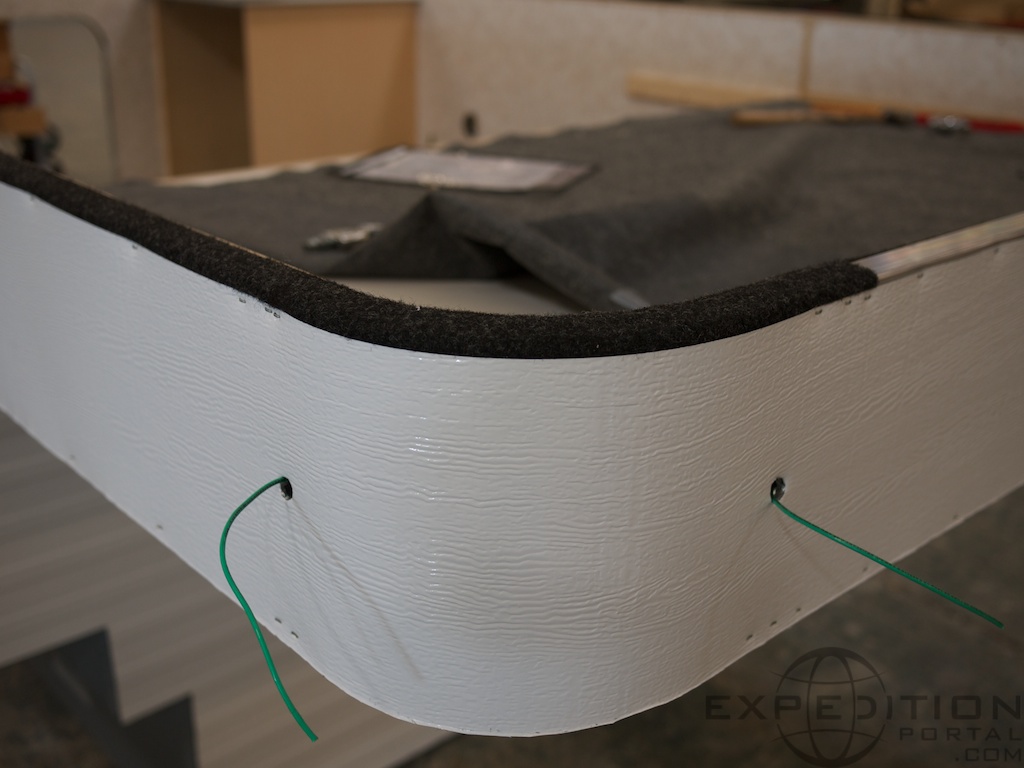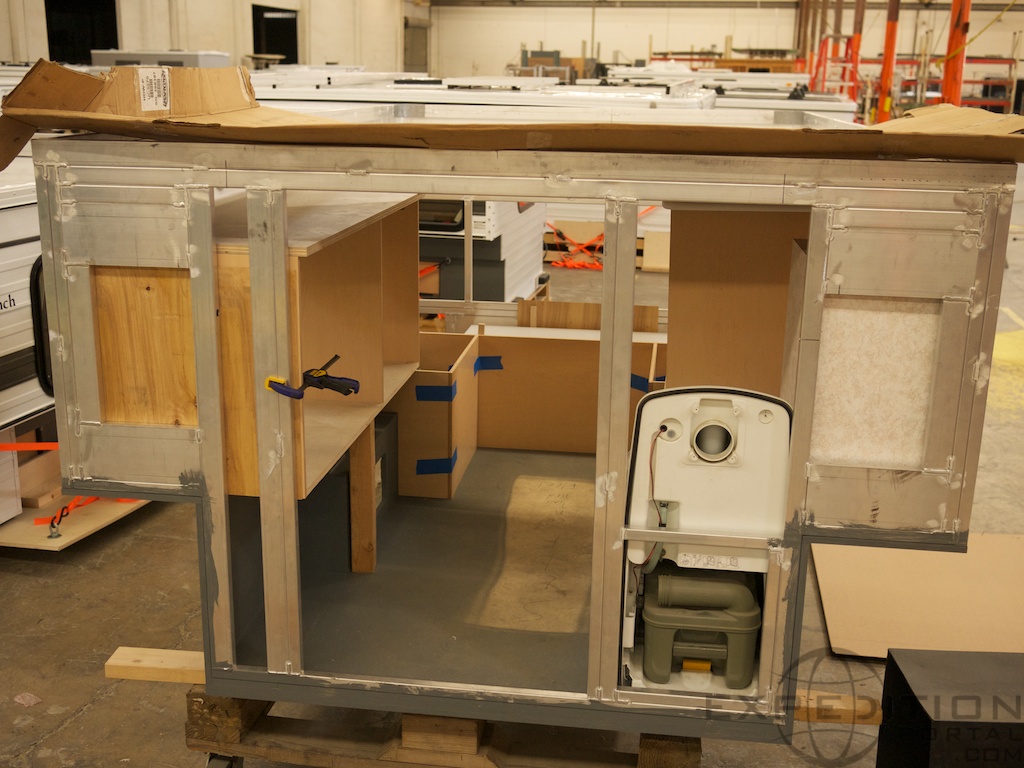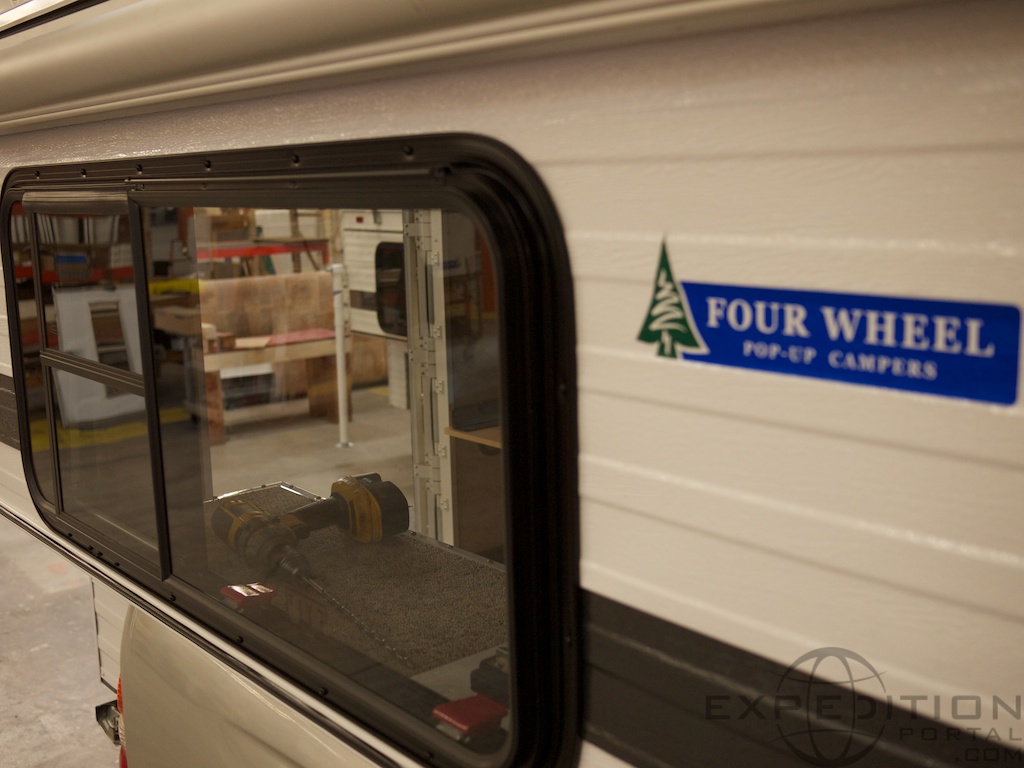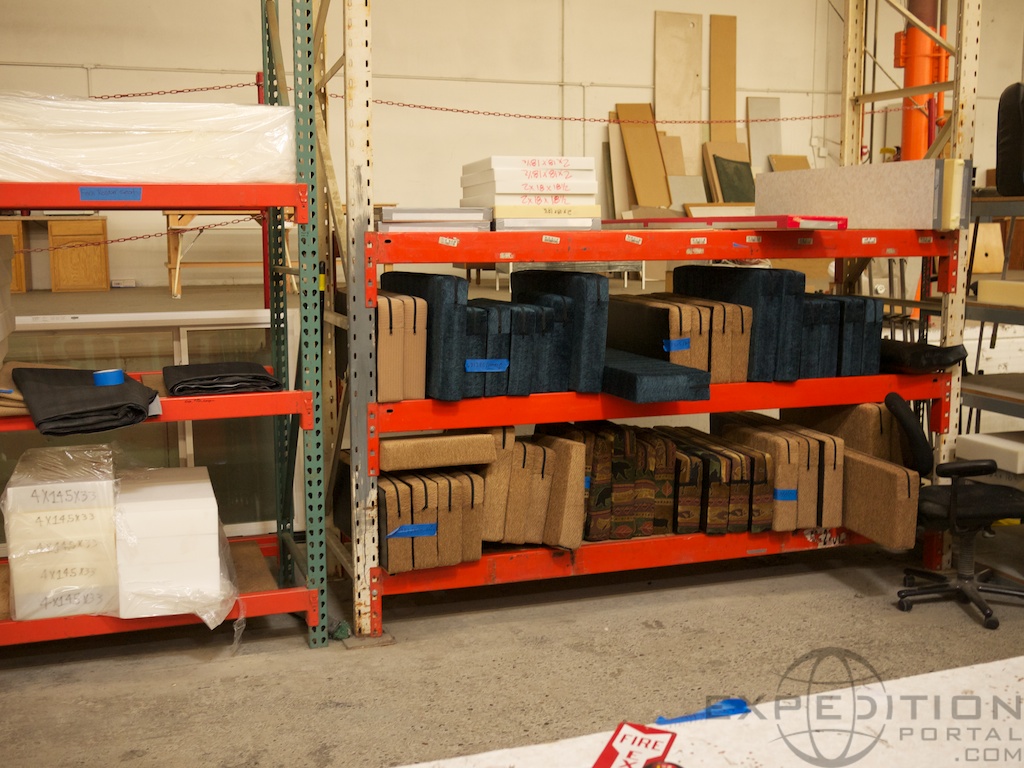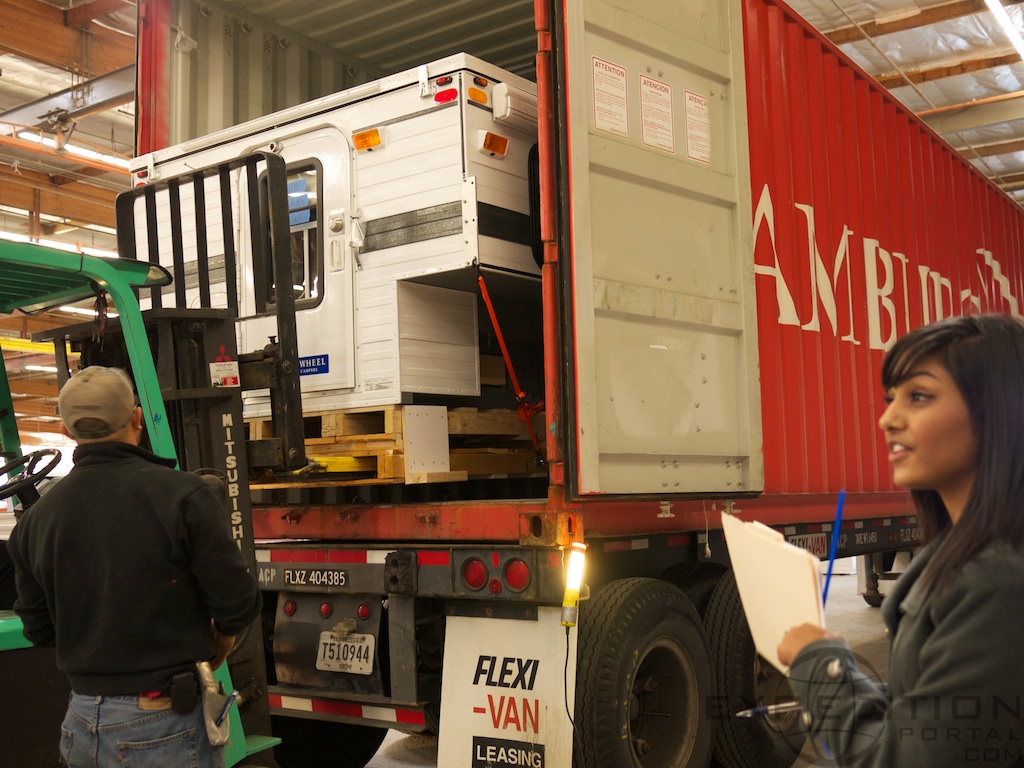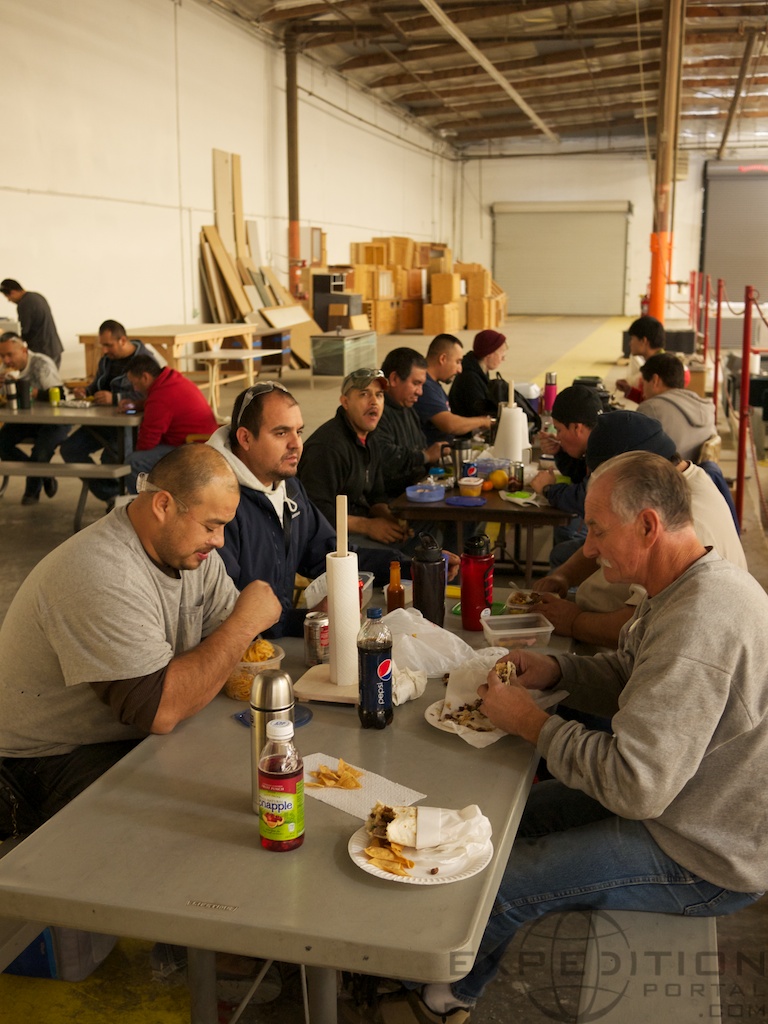Back in April of 2011, Four Wheel Campers moved into a larger production facility in Woodland, CA. The old building was about 20,000 ft2, whereas the new location is 80,000 ft2 plus two additional buildings for storage. With 40 employees in the shop and five in the front office, this was a much-needed upgrade. I was immediately impressed by the sheer size of the building. Upon walking through the front door, the first thing I saw was a beautiful wood carving which was made by an employee of theirs who emigrated from the Ukraine. Then, lining the main hallway of the front offices are photos & framed magazine articles of Four Wheel Campers from around the globe, reminding me of the rich history these campers have.
Everything pertaining to the campers is built underneath this roof – aside from the manufacturing of the appliances (fridges, stoves, etc.). But even these are tested here prior to installation. Owner, Tom Hanagan, when giving me a full tour of the new plant, stated that they strive to build a product that’s “lightweight, durable, and simple.” This was evident in seeing vintage campers from the 1980s that were in for repair & modifications. The main production here is building new units, but they also service used units that have been on the road for decades.
Beginning with aluminum tube stock, this goes onto a jig where the framework is welded into place. So much attention to detail can be seen here in the bends & welds, which end up hidden from sight in the end product. Parallel to that is a full carpentry area, where all of the cabinetry is made from scratch. Lightweight panels are utilized, helping to keep the overall weight down on these aluminum-frame campers. Nearby, roofs are being assembled. After seeing the various steps taken to ensure a watertight assembly, I can rest assured that my roof won’t be leaking any time soon.
Next down the line are the electrical experts. Electricians run wire throughout the camper frame, before the insulation, walls, and cabinetry are installed. Systems can be quite complex, incorporating solar panels to charge auxiliary batteries, battery separators (to separate the truck’s starter battery from house when camping), 12V plugs, and inverters for charging 110V devices. Not far from the electrical is the area where plumbing is installed. This ranges from water storage tanks, sinks, water heaters (for hot showers), and even cassette toilets. All systems are thoroughly tested before a camper is installed on a customer’s vehicle.
An in-house seamstress makes all of the cushions & curtains, custom built for each camper. Cushions are utilized both in the cab-over beds and couches. Another attention to detail that really impressed me is the use of carpet at the interior base of the fabric on the pop-up, that catches any condensation which then evaporates. At the end of the assembly line, special care is taken to ensure that all seams are sealed.
Although most Four Wheel Campers are in North America, units are shipped all over the world. During my morning there, I got to see two containers getting loaded with new campers – one going to Europe and another to South America. To add to this international experience, I had the opportunity to speak Spanish with many of the bilingual employees there. I joined them all for their lunch break, where we enjoyed delicious burritos from a local “roach coach” which makes frequent stops at the facility. Everyone I spoke to seemed genuinely happy to be working there; some who had been with FWC for close to a decade. The family atmosphere was very evident, and this shows in the high quality of the end product. Many of the employees I spoke to enjoy camping in their personal Four Wheel Campers. The company continues to make improvements, based on both their own experiences & feedback from customers.
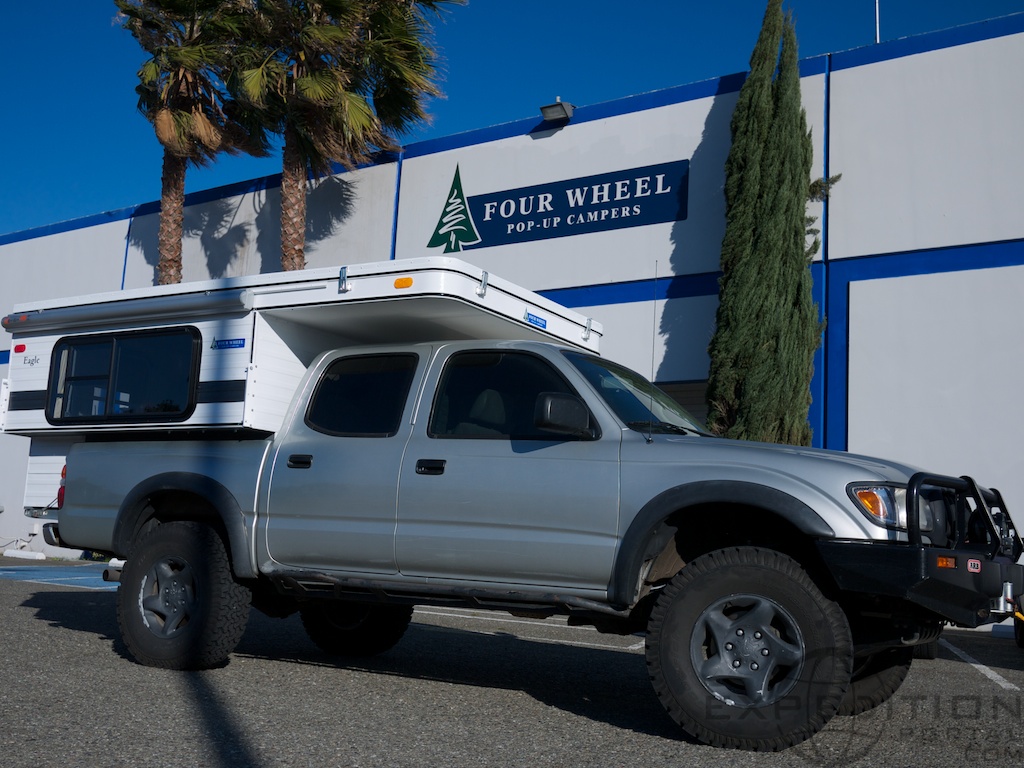
_________________________
Resources:
- Four Wheel Campers: https://fourwheelcampers.com, 800-242-1442
_________________________




